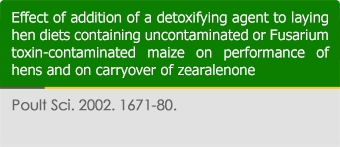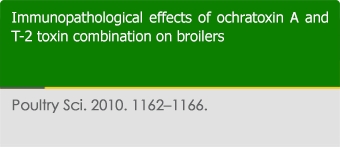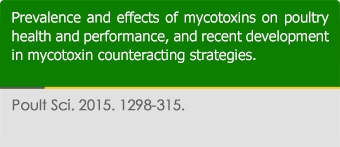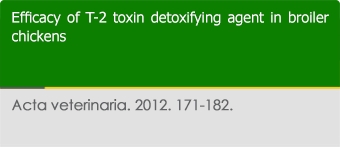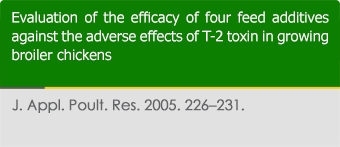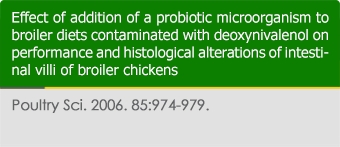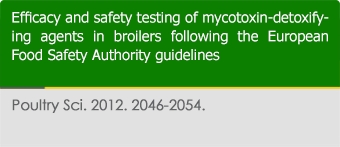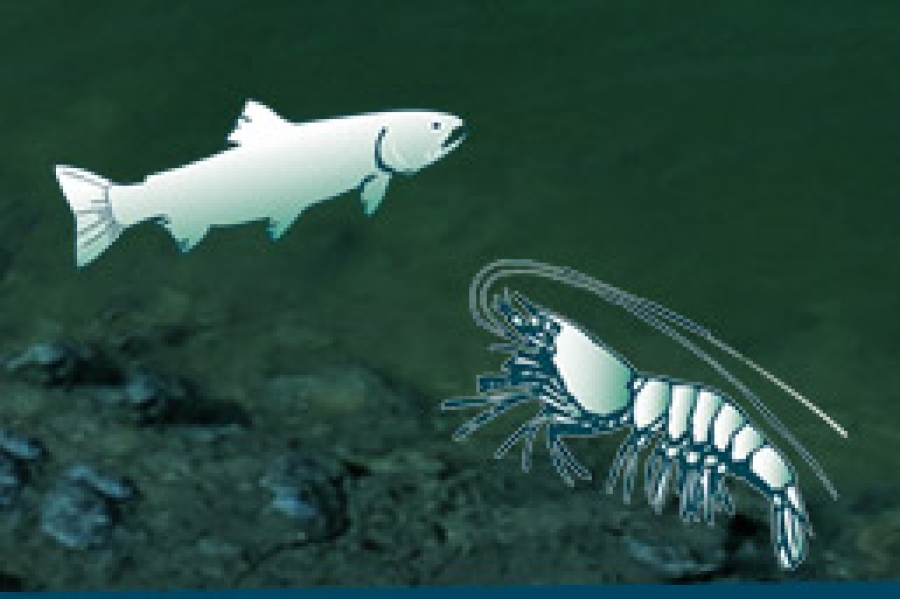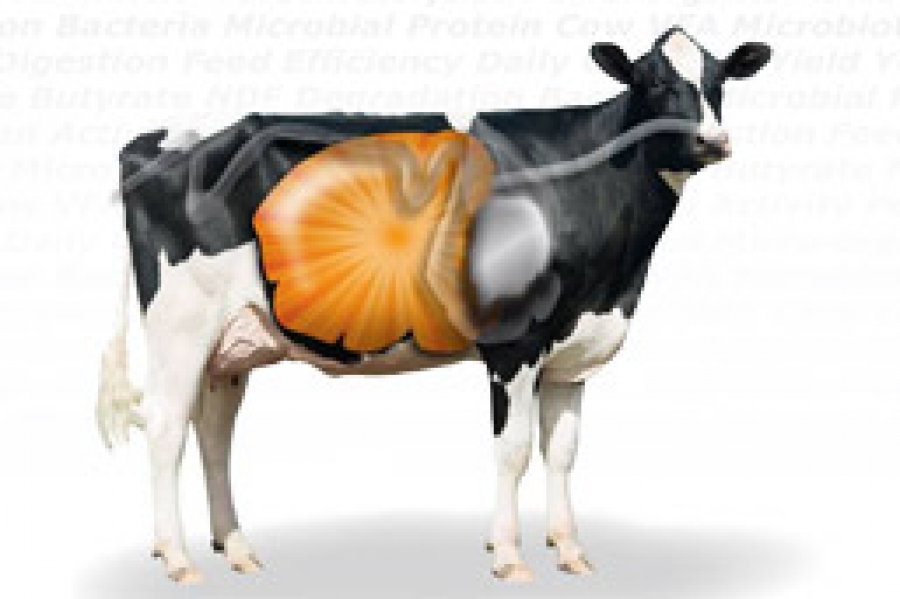Danicke, S., K.-H. Ueberschar I. Halle, S. Matthes, H. Valenta, and G. Flachowsky
16-wk experiment with laying hens was carried out to examine the effects of feeding of mycotoxin-contaminated maize (CM) on performance, nutrient digestibility, weight of organs, serum chemical parameters, and antibody titers to Newcastle disease virus (NDV) in serum. Also tested were fimbrien antigen K88 in egg yolk and zearalenone (ZON) residues in eggs and tissues. The Fusarium-toxin-contaminated maize contained 17,630 microg deoxynivalenol and 1,580 microg ZON/kg. Moreover, Mycofix Plus (MP), a so-called detoxifying agent, was added to both the uncontaminated control (UCM) and to the CM diet (70% dietary maize inclusion). Each of the four resulting diets (UCM, UCM-MP, CM, CM-MP)
Xue, C. Y., G. H. Wang, F. Chen, X. B. Zhang, Y. Z. Bi, and Y. C. Cao
The purpose of this study was to investigate the immunopathological effects of combinations of ochratoxin A (OTA) and T-2 toxin on broilers. Four hundred eighty 1-d-old broilers were randomly assigned to 4 groups, each group consisting of 4 duplicates each with 30 broilers. The 4 groups were fed the following diets for 4 wk: group 1=basal diet (control, mycotoxin-free); group 2=basal diet+2,000 mg/kg of Mycofix Plus; group 3=basal diet+0.25 mg/kg of OTA and 0.5 mg/kg of T-2; and group 4=basal diet+0.25 mg/kg of OTA and 0.5 mg/kg of T-2+2,000 mg/kg of Mycofix Plus. The feeding of OTA-T-2 toxin diets reduced (P<0.05) the level of anti-Newcastle disease virus antibody titers by 10.4%. When broilers were administered
Murugesan, G. R., D. R. Ledoux, K. Naehrer, F. Berthiller, T. J. Applegate, B. Grenier, T. D. Phillips, and G. Schatzmayr
Extensive research over the last couple of decades has made it obvious that mycotoxins are commonly prevalent in majority of feed ingredients. A worldwide mycotoxin survey in 2013 revealed 81% of around 3,000 grain and feed samples analyzed had at least 1 mycotoxin, which was higher than the 10-year average (from 2004 to 2013) of 76% in a total of 25,944 samples. The considerable increase in the number of positive samples in 2013 may be due to the improvements in detection methods and their sensitivity. The recently developed liquid chromatography coupled to (tandem) mass spectrometry allows the inclusion of a high number of analytes and is the most selective, sensitive,
This investigation was conducted in order to investigate the efficacy of the detoxifying agent Mycofix® Plus (MP) in the prevention and/or alleviation in vivo adverse effects of T-2 toxin in broilers. In addition, the adsorbing potential of MP was estimated in vitro. Mean degradation levels of T-2 toxin with MP in vitro, as measured by HPTLC, varied from 26.06 to 31.02 % and the adsorption ability was elevated in acidic environment (pH 3). In vivo trial was performed on 160 one day old "Ross" broiler chicks and lasted for 21 days. Birds were divided into 4 equal groups as follows: Group 1 - negative control; Group 2 - positive control - 2 ppm T-2 toxin; Group 3 - 2 ppm T-2 toxin+2 kg/t MP; Group 4 - 2 kg/t MP. Broilers fed the diet containing 2 mg/kg of T-2 toxin without MP developed typical T-2 toxicosis.
Diaz, G. J., A. Cortes, and L. Roldan
The possible protective effect of 4 feed additives against the toxic effects of T-2 toxin in growing broiler chickens was investigated in a 28-d fully randomized trial consisting of 6 dietary treatments (control with no T-2 toxin or feed additive added, 2 ppm T-2 toxin alone, 2 ppm T-2 toxin plus 2.0 g/kg Mycofix, 2 ppm T-2 toxin plus 2.0 g/kg Mycosorb, 2 ppm T-2 toxin plus 2.5 g/kg MycoAd, and 2 ppm T-2 toxin plus 3.0 g/kg Zeolex). When no feed additive was included, 2 ppm dietary T-2 toxin significantly decreased BW and increased feed:gain ratio. When 2.0 g/kg Mycofix were added to the diet, the feed additive protected against the adverse effects of T-2 toxin on BW, BW gain, and feed:gain ratio; however, no protection against the adverse effects of T-2 toxin on final BWandBWgain were obtained by
Awad, W. A., J. Bohm, E. Razzazi-Fazeli, K. Ghareeb, and J. Zentek
An experiment was conducted to study the effects of deoxynivalenol (DON) on the performance of broilers, organ weights, and intestinal histology and to evaluate the efficacy of a probiotic feed additive (PB, Eubacterium sp.) with the ability to deepoxidize DON. Two hundred seventy-seven 1-d-old broiler chicks were randomly assigned to 1 of the 3 dietary treatments for 6 wk. The dietary treatments were 1) control; 2) artificially contaminated diets with 10 mg of DON/kg of diet; 3) DON-contaminated diets plus probiotic feed additive (DON-PB). The BW and the efficiency of feed utilization were not adversely affected (P > 0.05) by the inclusion of DON in the diets. A slight improvement in feed intake and BW gain over the course of the experiment was
Osselaere A., M. Devreese, A. Watteyn, V. Vandenbroucke, J. Goossens, V. Hautekiet, M. Eeckhout, S. De Saeger, S. De Baere, P. De Backer, and S. Croubels
Contamination of feeds with mycotoxins is a worldwide problem and mycotoxin-detoxifying agents are used to decrease their negative effect. The European Food Safety Authority recently stated guidelines and end-points for the efficacy testing of detoxifiers. Our study revealed that plasma concentrations of deoxynivalenol and deepoxy-deoxynivalenol were too low to assess efficacy of 2 commercially available mycotoxin-detoxifying agents against deoxynivalenol after 3 wk of continuous feeding of this mycotoxin at concentrations of 2.44±0.70 mg/kg of feed and 7.54±2.20 mg/kg of feed in broilers.



